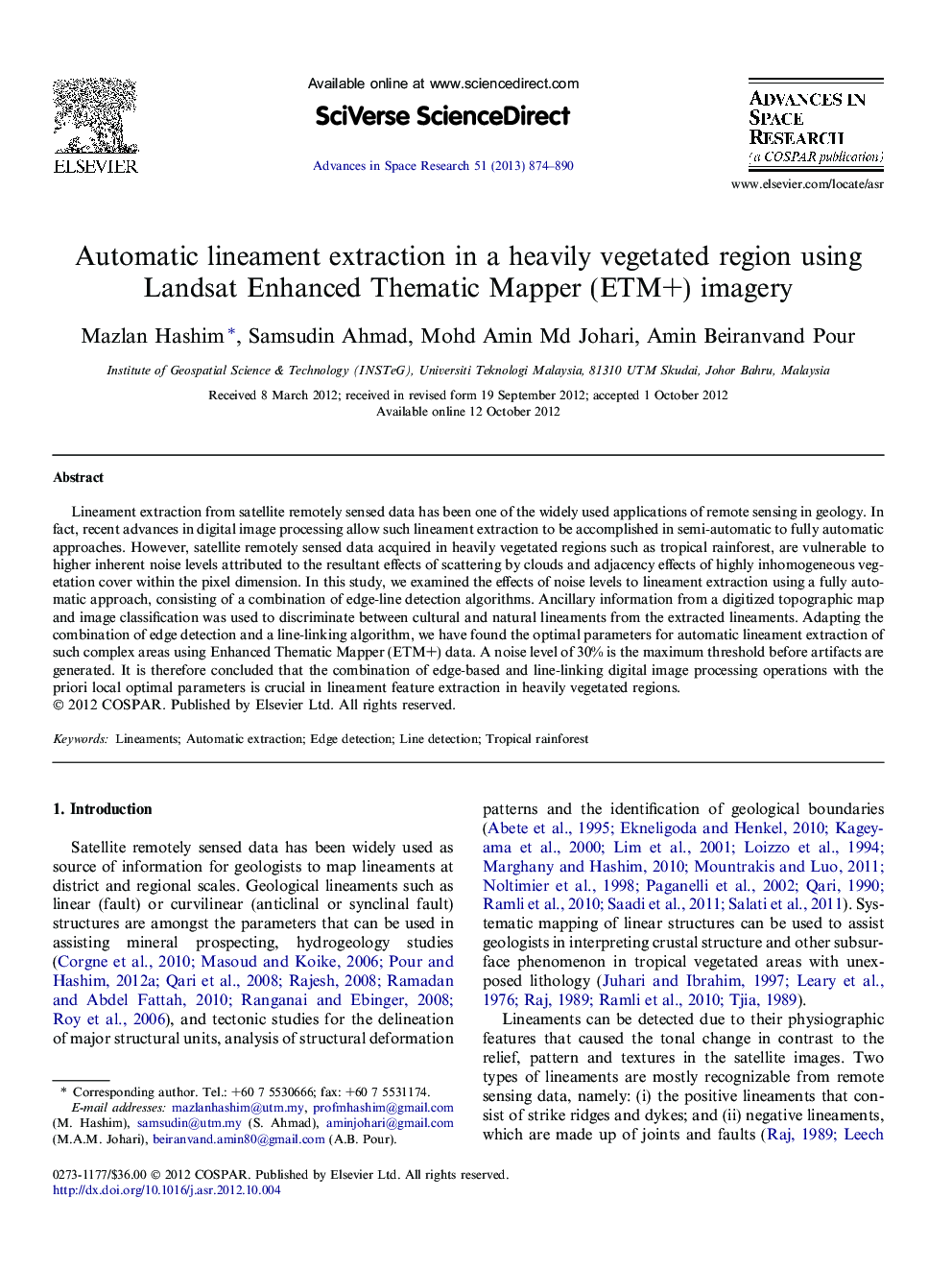| Article ID | Journal | Published Year | Pages | File Type |
|---|---|---|---|---|
| 1764857 | Advances in Space Research | 2013 | 17 Pages |
Lineament extraction from satellite remotely sensed data has been one of the widely used applications of remote sensing in geology. In fact, recent advances in digital image processing allow such lineament extraction to be accomplished in semi-automatic to fully automatic approaches. However, satellite remotely sensed data acquired in heavily vegetated regions such as tropical rainforest, are vulnerable to higher inherent noise levels attributed to the resultant effects of scattering by clouds and adjacency effects of highly inhomogeneous vegetation cover within the pixel dimension. In this study, we examined the effects of noise levels to lineament extraction using a fully automatic approach, consisting of a combination of edge-line detection algorithms. Ancillary information from a digitized topographic map and image classification was used to discriminate between cultural and natural lineaments from the extracted lineaments. Adapting the combination of edge detection and a line-linking algorithm, we have found the optimal parameters for automatic lineament extraction of such complex areas using Enhanced Thematic Mapper (ETM+) data. A noise level of 30% is the maximum threshold before artifacts are generated. It is therefore concluded that the combination of edge-based and line-linking digital image processing operations with the priori local optimal parameters is crucial in lineament feature extraction in heavily vegetated regions.
